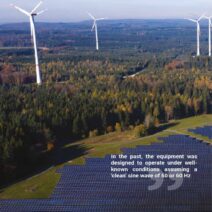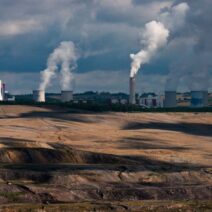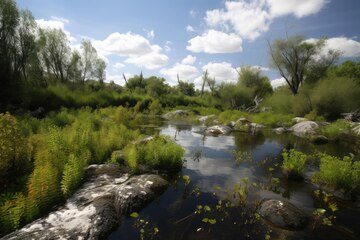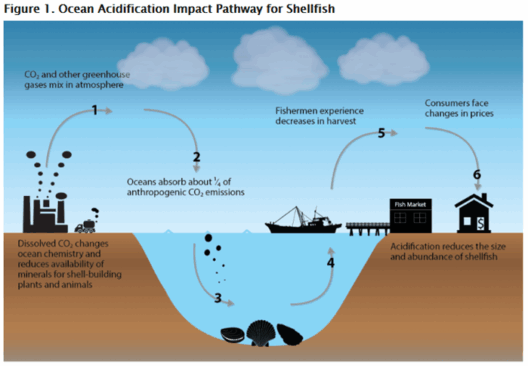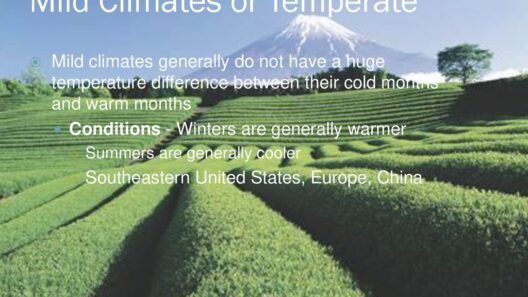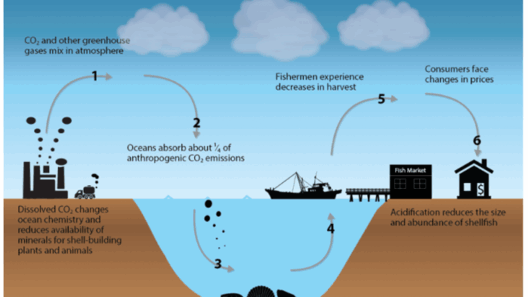The profound interplay between climate and ecosystems encapsulates a dynamic relationship that governs the very fabric of life on Earth. Climate exerts a substantial influence over habitats, fostering not only the growth of diverse species but also the resilience and stability of these environments. Understanding this connection is vital for appreciating the intricate web of life that exists within our planet’s biosphere. The observable phenomena of varying ecosystems tell a compelling tale of adaptation, survival, and transformation, all intricately linked to climatic factors.
The term “climate” encompasses long-term weather patterns in a particular region, incorporating temperature, humidity, precipitation, and wind. These elements shape the conditions under which ecosystems emerge and evolve. Habitats are not static; they are fluid entities that react and adapt to climatic changes, whether gradual or abrupt. This responsiveness is critical for understanding the evolutionary processes that create biodiversity and ecological niches where life can flourish.
A key observation is the stark contrast between different ecosystems, which exists due to varying climatic conditions. For instance, rainforests thrive in humid, warm climates with abundant rainfall, while deserts emerge in arid regions characterized by limited precipitation and extreme temperatures. Each ecosystem has adapted to exploit its unique climatic attributes. In rainforests, plant species have developed broad leaves to capture sunlight, while in deserts, cacti exhibit specialized structures to conserve water. Clearly, climate serves as a formidable force in determining which species survive and proliferate in which habitats.
Climate not only influences the physical characteristics of habitats but also dictates the interrelationships among organisms within these systems. The concept of ecological niches emerges here, illustrating how species adapt to their environment, often filling specific roles within the ecosystem. For example, in Arctic tundras, organisms such as polar bears and arctic foxes have developed adaptations to endure harsh winters, forming an intricate predator-prey dynamic. Such relationships highlight the dependency of life on climate and the subsequent effects when alterations to climate occur.
Furthermore, the phenomenon of climate change complicates these established dynamics, introducing unprecedented challenges to ecosystems. As global temperatures rise due to anthropogenic greenhouse gas emissions, the resulting alterations in climate patterns jeopardize the delicate equilibrium that governs habitats. Shifts in temperature can disrupt migration patterns, planting schedules, and seasonal behaviors, while changes in precipitation can lead to droughts or flooding, both of which devastate biodiversity.
Consider the coral reefs—an exemplary case of vibrant marine ecosystems reliant on stable climate conditions. These underwater sanctuaries thrive in specific temperature ranges, and even slight increases can trigger coral bleaching. This process, where corals expel the symbiotic algae that provide them with sustenance, can lead to large-scale die-offs. The cascading effects on marine life are profound, affecting not just the corals themselves but also the myriad species that depend on them for habitat and food. Thus, climate acts as both creator and destroyer in intricate ecological frameworks.
In the context of terrestrial ecosystems, the importance of climate becomes even more pronounced. Forests, wetlands, grasslands, and tundras all exhibit distinctive characteristics shaped by their climatic conditions. For instance, temperate forests, which experience four distinct seasons, host species adapted to survive variations in temperature and light throughout the year. In contrast, the savannahs—characterized by a seasonal rainfall pattern—support large herbivores and predatory animals that have adapted to travel vast distances in search of resources. These adaptations reveal the tenuous equilibrium within ecosystems, which is directly informed by climatic conditions.
The concept of climatic resilience is paramount in discussions about ecosystems. Resilient ecosystems possess the capacity to absorb disturbances and maintain functionality despite changes in climate. Forests and wetlands, for example, display remarkable adaptability; they can endure shifts in temperature and changes in water levels, provided these alterations occur within a certain threshold. However, when faced with rapid climate change, many ecosystems exhibit signs of stress. Species extinction rates accelerate, habitat loss occurs, and entire ecosystems may collapse, leading to irreparable damage both ecologically and economically.
Engaging with climate as a fundamental determinant of life invites deeper reflection on our stewardship of the planet. The intricate relationships among climate, ecosystems, and species highlight the urgency of addressing climate change on a global scale. Efforts to mitigate carbon footprints and promote sustainable practices become not merely acts of environmental activism but necessary measures to preserve the intricate balance of life itself.
The relationship between climate and ecosystems reinforces the notion that understanding natural systems is paramount for fostering a sustainable future. As we witness unprecedented changes in our climate, it becomes increasingly vital to recognize the fragility of ecosystems and the necessity for adaptive management strategies. The delicate balance maintained through evolutionary processes demonstrates the remarkable resilience inherent in nature, yet it also serves as a clarion call for immediate action against climate change.
The question then arises: What can we do to support these natural processes and help protect the interconnected tapestry of life that climate shapes? Engaging in dialogue, participating in conservation efforts, and advocating for sustainable practices are pivotal steps towards ensuring that climate continues to nurture and sustain the myriad ecosystems that make our world rich and vibrant.
